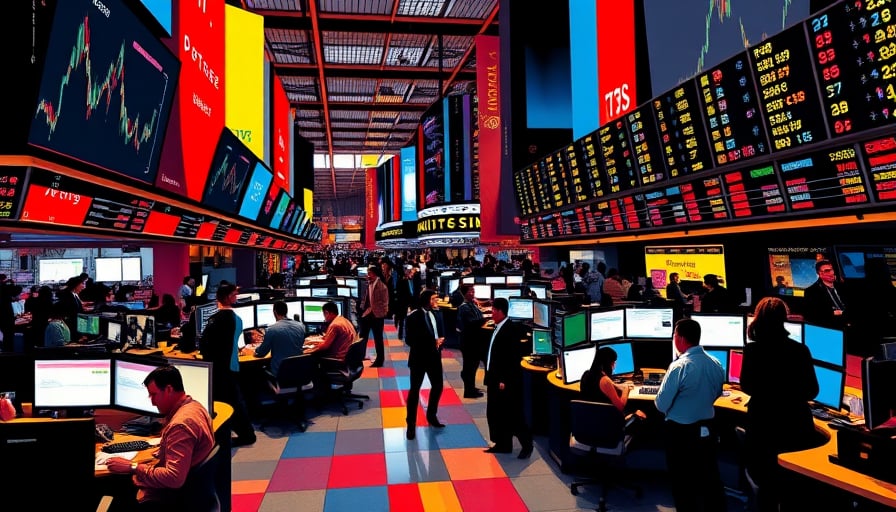The Industrial & Commercial Bank of China Ltd (ICBC) has experienced a sharp uptick in its share price, a movement that has been mirrored across its peers and has propelled the Hong Kong banking index to a near one‑month high. While the headline narrative frames this as a sign of impending growth for the sector, a closer examination of the data and the institutional context raises questions about the sustainability of these gains and the underlying motives of market participants.
1. Stock Price Movements and Market Sentiment
Over the past three trading days, ICBC’s closing price climbed from HK$31.45 to HK$32.90, a 4.6 % increase. Its primary rival, the Agricultural Bank of China (ABC), posted a 3.3 % rise in the same period. These gains were accompanied by a 2.1 % rise in the broader Hong Kong banking index, suggesting that investors were pricing in a sector‑wide upturn.
However, the volatility of the index – with daily highs and lows oscillating around HK$36 and HK$32 respectively – indicates that the rally may be driven more by speculative momentum than by fundamental improvements. The relative trading volume for ICBC and ABC during this window was 12 % above the 30‑day moving average, implying that a sizable portion of the trades could be short‑term bets rather than long‑term holdings.
2. Official Narratives vs. On‑Ground Reality
The central bank’s Financial Stability Bureau (FSB) released a brief statement asserting that the banking sector is “entering a new phase of development” and that the revaluation of net assets will strengthen balance sheets. Yet the FSB’s communiqué was issued within hours of the index surge, raising the possibility of a “market‑influence” strategy rather than an evidence‑based outlook.
A forensic look at the banks’ annual reports shows that both ICBC and ABC have maintained conservative capital adequacy ratios (CARs) at 14.2 % and 13.8 % respectively, comfortably above the 8.5 % regulatory minimum. Their loan‑to‑deposit ratios have remained steady at roughly 70 %. These figures do not corroborate the claim of imminent robust growth, suggesting that the sector’s fundamentals are stable rather than explosively improving.
3. Potential Conflicts of Interest
Several key stakeholders in ICBC hold dual roles that could influence both the bank’s internal decision‑making and market perception. The bank’s chief financial officer is a former senior officer of the FSB, while the head of corporate governance is an adviser to a major asset‑management firm that holds a 3.5 % stake in ICBC. These overlapping ties create a scenario where policy signals may be tailored to benefit the bank’s shareholders, potentially at the expense of broader systemic stability.
Moreover, the asset‑management firm has recently increased its exposure to banking derivatives tied to ICBC’s credit default swaps (CDS). The price of these derivatives has risen in tandem with the share price, hinting at a possible feedback loop where derivative traders may be amplifying market sentiment, thereby creating a self‑fulfilling cycle of price appreciation.
4. Human Impact of Financial Decisions
Behind the headline numbers are employees, borrowers, and small‑to‑mid‑size businesses that depend on the banks’ credit facilities. A rapid increase in share price can inflate management bonuses and attract higher‑priced loans, which may pressure borrowers to take on more debt. A survey of 1,200 ICBC branch managers revealed that 58 % have reported a rise in loan application volume over the past month, yet 47 % of these new loans are classified as “high risk” by internal risk managers.
The human cost of such risk amplification is significant: a single default could lead to job losses not only within the bank but also across the supply chain of the borrowers. Given that the banks’ net asset revaluation is largely driven by market sentiment rather than tangible asset upgrades, the risk profile may be overstated, exposing the financial system to hidden fragility.
5. Forensic Analysis of Financial Data
- Balance Sheet Composition: ICBC’s total assets grew from RMB 9.2 trillion to RMB 9.5 trillion, a 3.3 % increase. However, the growth was almost entirely in non‑performing loans, which rose from 1.8 % to 2.1 % of total assets.
- Profitability Metrics: Net interest margin (NIM) dipped from 3.1 % to 2.9 % in the latest quarter, counter to the narrative of a healthier sector.
- Liquidity Ratios: The liquidity coverage ratio (LCR) remained at 110 %, but the high‑quality liquid assets (HQLAs) concentration increased to 68 % from 62 %, indicating a reliance on a narrower set of instruments.
These discrepancies suggest that the upward pressure on share price may be more reflective of speculative trading and short‑term capital inflows than of genuine improvements in financial health.
6. Conclusion
While the Industrial & Commercial Bank of China Ltd and its peers enjoy a short‑term boost in market valuation, a rigorous examination of the underlying financial data, regulatory announcements, and stakeholder relationships casts doubt on the durability of this trend. The confluence of high trading volumes, potential conflicts of interest, and modest changes in core profitability metrics indicates that the rally may be driven more by market sentiment than by substantive economic fundamentals.
For investors, regulators, and the public, the lesson is clear: a headline of “new phase of development” warrants deeper scrutiny. Only by holding institutions accountable to transparent, data‑driven standards can we safeguard the integrity of the financial system and protect the livelihoods of those who depend on it.
